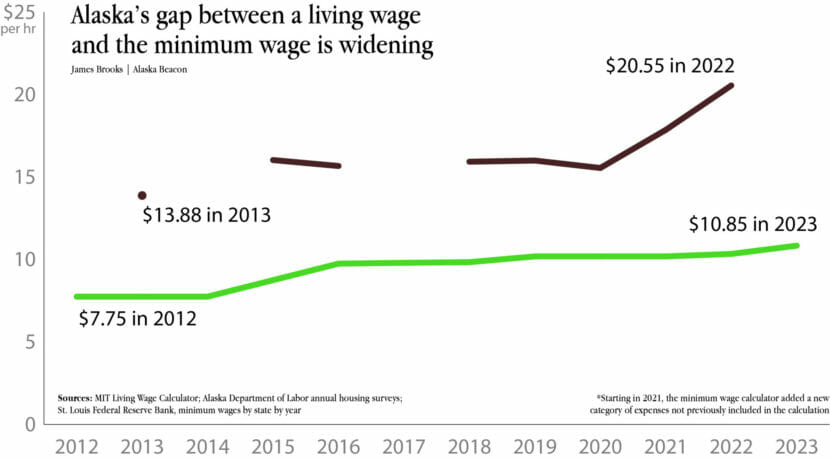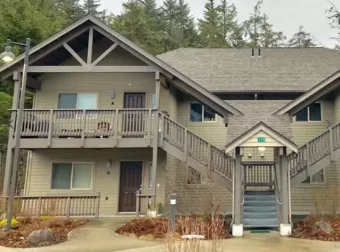
Alaska’s minimum wage will rise 51 cents, to $10.85 per hour, starting next year.
The adjustment, announced Friday by the Alaska Department of Labor and Workforce Development, is intended to compensate for a 5% rise in the cost of living in Anchorage. Alaska law requires the minimum wage to be adjusted each year for inflation. Despite the increase, the minimum wage remains well below a widely used measure of a living wage in Alaska.
In Anchorage, the median apartment rental price is $1,339 per month, according to a survey conducted this year by the Alaska Housing Finance Corp. and the Department of Labor. That figure includes rent and utilities and rose 14% from last year.
Taking into account 12% withheld for taxes, someone earning minimum wage would have to work 35 hours per week in a four-week month to cover the cost of housing.
The MIT living wage calculator identifies $1,554 in other costs per month, including food, transportation and other expenses. That figure is based on estimates from various federal sources.
At minimum wage, an individual adult would have to work another 41 hours per week to cover those costs.
Altogether, estimates indicate someone earning minimum wage would have to work 71 hours per week to meet their basic needs in Anchorage.
If that person had one child, they would have to work an additional 20 hours per week at minimum wage to cover the cost of child care, according to the MIT estimate. Each additional child is estimated to cost another 20 hours of work per week.
A living wage is defined as the minimum amount needed to pay for basic needs while working a standard 40-hour workweek. In all of Alaska’s cities and boroughs, the minimum wage is significantly below the living wage amount.
In the Matanuska-Susitna Borough, someone would have to work 69 hours per week at minimum wage to meet basic needs. In Fairbanks, it’s 75 hours. In Juneau, it’s 74 hours.
Based on current estimated costs, the minimum wage would need to be above $18.08 per hour in order to be a living wage in Anchorage.
No state’s current minimum wage is at or above the statewide living wage.
This story originally appeared in the Alaska Beacon and is republished here with permission.



